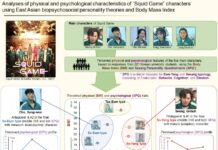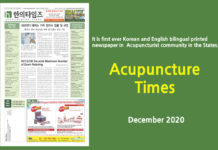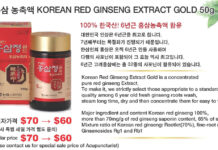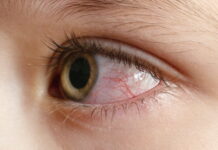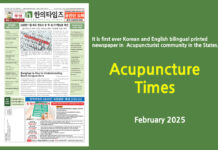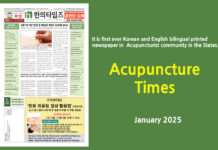Unlocking the Clinical Applications, Sanjiao Meridian (SJ)
By Namwook Cho L.Ac.
The Sanjiao Meridian plays a crucial role in fluid metabolism and is frequently used to treat stress-related conditions such as depression, anxiety, and Hwa-byung (anger syndrome). It is also effective in alleviating shoulder pain and headaches.
In Saam acupuncture therapy, Sanjiao Tonification (GB 41, SJ 3 tonified / SJ 2, BL 66 reduced) is used to relieve inflammatory musculoskeletal pain, while Sanjiao Sedation (SJ 2, BL 66 tonified / SJ 10, ST 36 reduced) is applied to improve Qi circulation and resolve fluid stagnation.
Sanjiao Tonification is particularly effective for mental disorders, insomnia, and shoulder or arm pain, whereas Sanjiao Sedation is beneficial for headaches around the Taiyang (太阳) point and fluid retention issues.
The Sanjiao Meridian (Hand Shaoyang Meridian) is conceptually and clinically complex and is often described as a fluid circulation pathway. In the Upper Jiao, fluids nourish the lungs like mist; in the Middle Jiao, digestion creates froth-like bubbles; and in the Lower Jiao, the kidneys and bladder regulate water flow like a canal.
The Sanjiao Meridian regulates fluid metabolism and Qi movement. As a Shaoyang Meridian, it carries Ministerial Fire, linked to heat from emotional imbalances. This explains its use in treating psychiatric disorders, depression, and anxiety. Emotional stress stagnates Qi, accumulating heat in Dan Zhong (Ren-17), often seen in Hwa-byung (anger syndrome). Patients instinctively tap their chest (Dan Zhong, Pericardium Mu point) to release stagnation. Sanjiao vs. Small Intestine: A Functional Comparison
The Sanjiao and Small Intestine are frequently compared, as both share the fire element but exhibit distinct physiological roles. While the Sanjiao primarily regulates water pathways, the Small Intestine controls blood and pulse circulation. Their pathological manifestations also differ:
-Sanjiao disorders typically involve heat sensations and edema.
-Small Intestine disorders often present with cold-related syndromes, blood stasis, and blood deficiency.
Saam Acupuncture: Sanjiao Tonification and Sanjiao Sedation
Sanjiao Tonification
Tonification points GB 41, and SJ 3 stimulate the Sanjiao movement, promoting meridian circulation.
Sedation points: SJ 2, BL 66 reduces inflammation and pain associated with musculoskeletal conditions.
Clinical Applications
-Stroke prevention in individuals under chronic stress.
-Treatment of psychiatric conditions, hysteria, and insomnia.
-Loss of sense of smell unrelated to respiratory infections.
-Shoulder stiffness and lateral arm pain.
-Loss of Smell Treatment Considerations:
Small Intestine Tonification (SI Tonification): Used when nasal dryness, congestion, excessive crusting, or nosebleeds are present.
Lung Tonification (LU Tonification): Indicated when a cold, runny nose or general respiratory infection is involved.
Sanjiao Tonification (SJ Tonification): Used when anosmia occurs without any cold or respiratory symptoms.
Stomach Sedation with Wei Tonification (ST Sedation + Wei Tonification, GB 41, ST 43 tonified / ST 41, LI 5 sedated): Effective for chronic rhinitis, excessive nasal discharge, hypersensitivity, and cases with calloused ankle areas.
Sanjiao Sedation
Tonification points: SJ 2, BL 66 regulates deficiency heat in the Sanjiao.
Sedation points: SJ 10, ST 36 controls reversed Qi movement and fluid stagnation.
Clinical Applications
-Frontal headaches.
-Taiyang point headaches (a region near the temples).
If Sanjiao Sedation is ineffective, Gallbladder Sedation (GB Sedation) can be an alternative approach.



